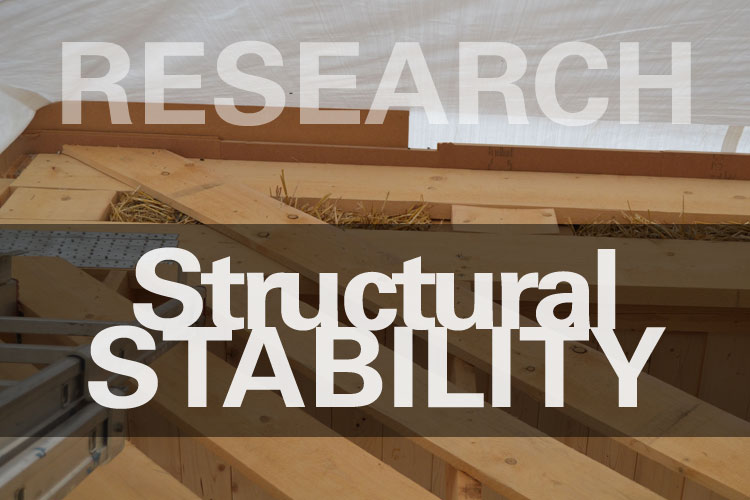From the point of view of environmental awareness, construction sustainability is a theme that is gaining considerable attention. This has brought to a re-discovery of the use of straw as a construction material, a technology that has been widely used in the past centuries. Straw is a natural material having excellent insulating capabilities, considerable mechanical properties when packed in bales and is relatively low cost (it is indeed a by-product of farming activity). Two are the techniques adopted in straw bale construction: post-and-beam, where the load is sustained by a wooden frame and straw bales are used merely as infill material; and load-bearing, where the entire load is sustained by the plastered straw bale walls. Especially regarding the latter technique, there is a need for a deeper understanding of the mechanical properties of straw bales.
The characterization of the material is made difficult by the variability brought about by the variety of plants from which straw can be obtained, the unpredictability of the baling process, the moisture content in the bale and other parameters. Moreover, there is not a standard regulating the productive chain of straw bales to be used for construction. In this paper, a literature review on the tests performed on single unplastered straw bales is conducted and, based on this, some ideas are proposed for the development of a model describing the mechanical behavior of straw bales.
Authors: Maraldi, Mirko; Molari, Luisa; Molari, Giovanni




